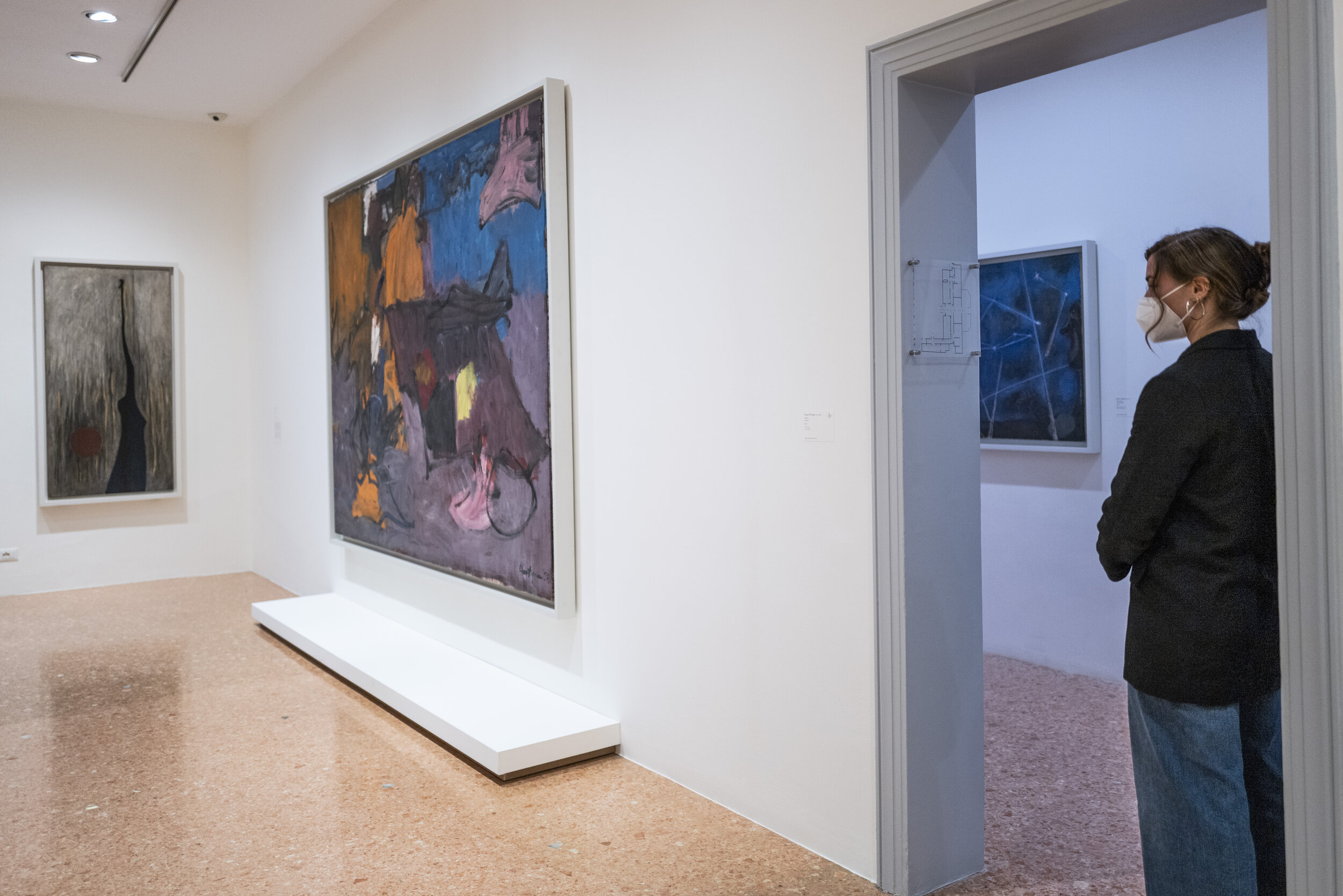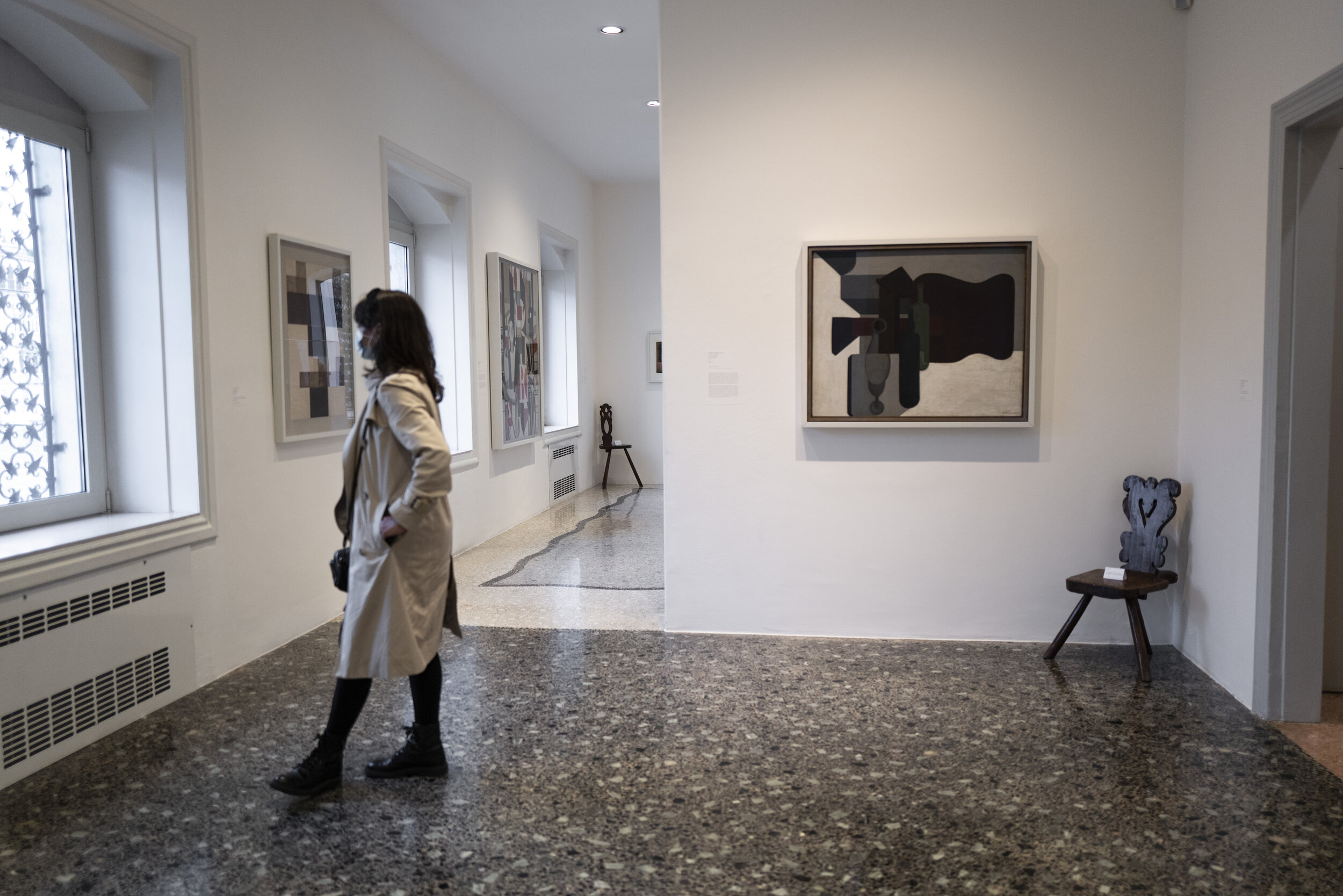
GUGGHENEIM
Home Tickets Museums Venice
Guggenheim Collection Venice Tickets
Guggenheim-Venice
GUGGENHEIM PERMANENT COLLECTION IN VENICE TICKET
This reservation allows for queue-free entry to the exhibition.
Full ticket: 16.50 euros + 3.00 euros reservation fee
Reduced ticket: 14.50 euros + 3.00 euros booking fee
Special Reduced ticket: 10.50 euros + 3.00 euros booking fee
Children under 10 free, no reservation fee
PLEASE NOTE: The ticket,once booked, is neither moveable nor refundable for any reason.
OPENING HOURS
Open every day except Tuesdays from 10 a.m. to 6 p.m. Tickets can be reserved by 10 a.m. and are valid for the whole day.
The museum is open from 10 am to 6 pm.
Closed December 25.
The Peggy Guggenheim Collection is the most important museum in Italy for 20th-century European and American art created by American heiress Peggy Guggenheim (1898-1979).
The Peggy Guggenheim Permanent Collection is based in Venice, in Palazzo Venier dei Leoni on the Grand Canal, in what was once the home of the American patron.
The museum displays masterpieces of Cubism, Futurism, Metaphysical Painting, European Abstractionism, avant-garde sculpture, Surrealism and American Abstract Expressionism, by some of the greatest artists of the 20th century, including Picasso, Braque, Ducamp, De Chirico, Miró, Dalí and many others.
The museum also exhibits both works donated to the Solomon R. Guggenheim Foundation. In addition to these two important collections, there are other relevant collections as well as temporary exhibitions scheduled throughout the year.
The Peggy Guggenheim Collection is a museum on the Grand Canal in Venice based in Palazzo Venier dei Leoni. It houses mainly the personal art collections of Peggy Guggenheim whose works span the period of Cubism, Surrealism and Expressionism.
This museum located in Venice, which was also once the private home of Peggy Guggheneim, houses a smaller and more concentrated collection than the other Guggenheim museums, despite this fact, works that most express certain artistic currents such as American modernism and Italian futurism are contained within it.
We can find, in addition, cubist, surrealist and abstract expressionist works with works by Picasso, Salvador Dali, Renè Magritte, Jackson Pollock and many others. Completing its beauty is also the collection of Italian informal abstractionism, an artistic-pictorial current of the post-World War II period where the artist perceives his inability to convey a precise message given by the suffering experienced in World War II and for this he uses the most disparate objects such as plastic sheeting, vinyl glue and whatnot. Until 1979 by the will of the owner once a week most of the house was opened to the public free of charge to allow them to enjoy the collection. Contained inside are works of great value: Pablo Picasso's "On the Beach," Renè Magritte's "Empire of Lights," Vasily Kandinsky's "Toward the Top," and many, many more. The Guggenheim collection can be visited by skipping the queue through our website
Contemporary painting in Venice
The greatest exponent of the Cubist current is Pablo Picasso. He was born in 1881 in Malaga, Andalusia to a painter father who passed on his passion to his son, who began drawing at an early age. In the opening of 1904 he moved permanently to Paris after several cultural sojourns. His style evolves from the "blue period": monochromatic painting done in shades of blue and turquoise, played on cold colors where the human subjects belong to the category of the marginalized, to the "pink period": more cheerful style with warmer tones of pink and orange. Picasso rediscovers an interest in volume and space while still representing melancholy. Almost all the paintings depict circus people behind the scenes to make people understand the difficulty of their work: making people laugh. Finally, we come to the elaboration of the Cubist current from the analytic phase to the syntentical phase. From 1936, the Spanish Civil War provokes a deep emotion in Picasso that culminates on an artistic level in his most successful work, Guernica.
One of Pablo Picasso's most famous paintings and preserved within the Guggenheim collection is "On the Beach," also called "La Baignade." Made in early 1937, the artist devoted himself to drawings and etchings denouncing the Spanish Civil War. The work was made in France of which two preparatory drawings are preserved. The bathers appear to be carved from pumice stone, but despite this they retain their grace and gentleness.
Also preserved within the collection are works by the greatest exponent of surrealism, Francois Ghislain Magritte.
Magritte paints with a unique technique illiustrating objects of absurd realities: a pair of shoes that turn into the toes of a foot, a simultaneous passage of nocturnal at the bottom of the painting and diurnal at the top using cold, antisentimental colors like those of a dream. His painting is not meant to bring out the unconscious of man but to enhance the usual objects that taken out of their natural context appear unusual.
One of Magritte's most successful works and preserved in the Guggenheim collection in Venice is "Empire of Lights." The painting depicts a blue sky sprinkled with white clouds; in the foreground, on the other hand, a dark street is depicted with a streetlamp faintly illuminating a dwelling immersed in a dark, nocturnal landscape. The form is three-dimensional but the distinctiveness can be seen in the depiction: the work has two different, opposite moments: at the top it is daytime, at the bottom it is night. The brightness of the sun is in sharp contrast to the darkness of the night giving a feeling of disturbance and unease. The artist's intent is to create a sense of shock, disturbance and bewilderment towards the viewer. In this work, Magritte uses the method of oxymoron, a rhetorical figure that consists of juxtaposing words of opposite meanings: in this case, day and night.
Salvador Dali: Surrealism in Venice
Salvador Dali was born in Figueres (Catalonia) in 1904 and was a Spanish painter, sculptor, filmmaker, photographer, designer and screenwriter. At the age of five he was taken to the grave of his younger brother by his parents, who had died about nine months earlier of meningitis, who convinced him that he was his reincarnation, a folly of which he became convinced. In 1922 Salvador Dali began studying at the "Academia de San Fernando," attracting the interest of others because of his eccentric dandy ways. He wore long hair and sideburns and dressed like the British aesthetes of the late 19th century. In addition to approaching the Cubist movement, he also approached Dadaism, which would influence him throughout his life. Dali was expelled from the school shortly before taking his final exams as he claimed that no one in the institution was capable of examining someone like him. In that year he visited Paris for the first time, making the acquaintance of Picasso, whom he so deeply admired that he was influenced in his works.
Dali took possession of many styles such as classical painting with reference to Raphael, Bronzino, Francisco de Zurbaràn, Vermeer and Velàzquez. One of the works preserved within the Guggenheim Collection, purchased in 1940, is "The Birth of Liquid Desires," made around 1932. The painting represents his personal interpretation of the William Tell myth, a recurring subject in the artist's works. The entire composition is dominated by a large yellow rock whose shape resembles a violin or cello. The use of the musical instrument is a visual metaphor for the human body. The couple in the center of the painting could represent William Tell and Gradiva. At first glance it might appear that the two subjects are holding each other in a gentle embrace, in fact the man's raised hand expresses fear as if trying to ward off gradiva who has taken the form of a spectre with a head composed of roses, the artist wanting to give more importance to decadence than to passion. On either side of the central couple we find a female and a male figure performing mysterious ritual gestures with their faces concealed. The male figure turns his back to the viewer and seems to enter a cave, recalling the myth of Sisyphus, who as a punishment in Hades had to carry a huge boulder to the top of a hill without ever reaching its destination. The female figure, pours a liquid from a pitcher into a basin where the protagonist's foot is immersed. This element could refer to the religious rite of anointing, but the woman is shown to be repulsed because she turns her head to the opposite side so as not to see. The father figure represented by the old man features a female breast. It refers to Freud's study of the painter Haitzmann, who imagined making a pact with the devil by representing him with women's breasts.






Peggy Guggenheim Foundation - Venezia
Palazzo Venier dei Leoni
Dorsoduro 701
I-30123 Venice
Orari
Lunedì–venerdì
10:00–18:00
Telefono
+39 041 2405 411
Grow your audience.
It all begins with an idea. Maybe you want to launch a business. Maybe you want to turn a hobby into something more. Or maybe you have a creative project to share with the world. Whatever it is, the way you tell your story online can make all the difference.
Make it stand out.
It all begins with an idea. Maybe you want to launch a business. Maybe you want to turn a hobby into something more. Or maybe you have a creative project to share with the world. Whatever it is, the way you tell your story online can make all the difference.
About Venice
Palaces
Doge’s Palace - Palazzo Ducale
Islands and districts
Festival del Cinema di Venezia
Rialto Bridge - Ponte di Rialto